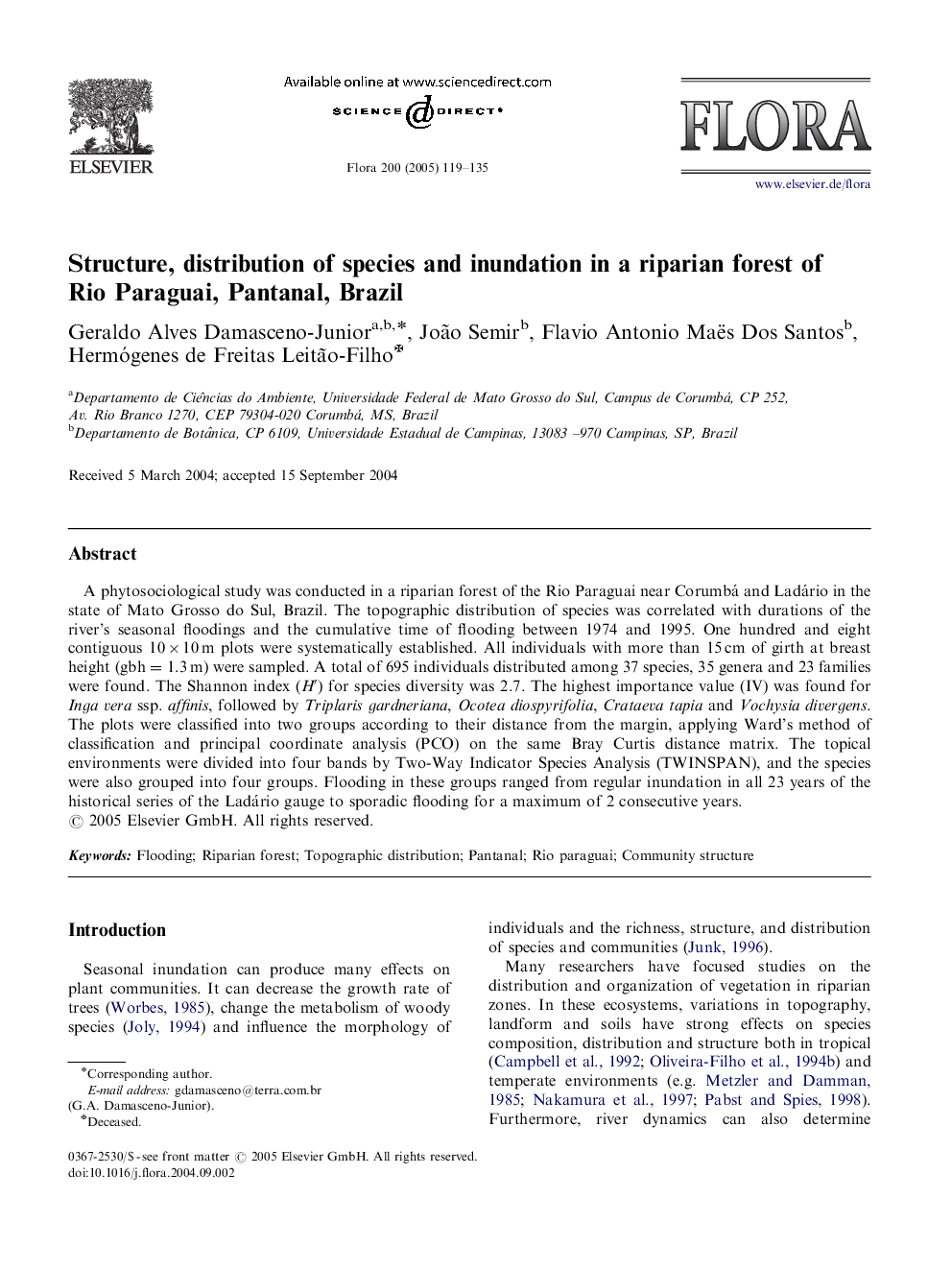| Article ID | Journal | Published Year | Pages | File Type |
|---|---|---|---|---|
| 10939251 | Flora - Morphology, Distribution, Functional Ecology of Plants | 2005 | 17 Pages |
Abstract
A phytosociological study was conducted in a riparian forest of the Rio Paraguai near Corumbá and Ladário in the state of Mato Grosso do Sul, Brazil. The topographic distribution of species was correlated with durations of the river's seasonal floodings and the cumulative time of flooding between 1974 and 1995. One hundred and eight contiguous 10Ã10Â m plots were systematically established. All individuals with more than 15Â cm of girth at breast height (gbh=1.3Â m) were sampled. A total of 695 individuals distributed among 37 species, 35 genera and 23 families were found. The Shannon index (Hâ²) for species diversity was 2.7. The highest importance value (IV) was found for Inga vera ssp. affinis, followed by Triplaris gardneriana, Ocotea diospyrifolia, Crataeva tapia and Vochysia divergens. The plots were classified into two groups according to their distance from the margin, applying Ward's method of classification and principal coordinate analysis (PCO) on the same Bray Curtis distance matrix. The topical environments were divided into four bands by Two-Way Indicator Species Analysis (TWINSPAN), and the species were also grouped into four groups. Flooding in these groups ranged from regular inundation in all 23 years of the historical series of the Ladário gauge to sporadic flooding for a maximum of 2 consecutive years.
Related Topics
Life Sciences
Agricultural and Biological Sciences
Ecology, Evolution, Behavior and Systematics
Authors
Geraldo Alves Damasceno-Junior, João Semir, Flavio Antonio Maës Dos Santos, Hermógenes de Freitas Leitão-Filho,
